#blood and sand
Text


Tyrone Power in Blood and Sand (1941)
#Tyrone Power#Blood and Sand#1940s#old hollywood#old cinema#old movies#classic movies#classic hollywood#photos
57 notes
·
View notes
Photo



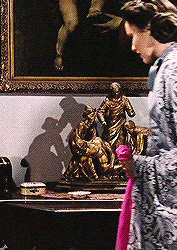
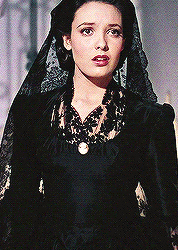
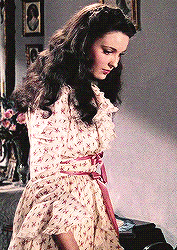

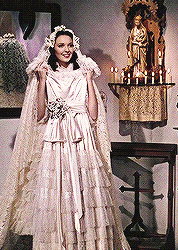

Linda Darnell's wardrobe in BLOOD AND SAND (1941)
Costume Design by Travis Banton
735 notes
·
View notes
Text

Rita Hayworth, Blood and Sand, 1941
72 notes
·
View notes
Text




blood and sand dir. rouben mamoulian
58 notes
·
View notes
Text



Blood and Sand (1941)
177 notes
·
View notes
Text

Hayworth and Tyrone Power in Blood and Sand (1941)
#rita hayworth#blood and sand#aesthetic#vintage#old school cool#tyrone power#40s hollywood#style#beauty#glamour#old hollywood#40s movies#eroticism
59 notes
·
View notes
Photo
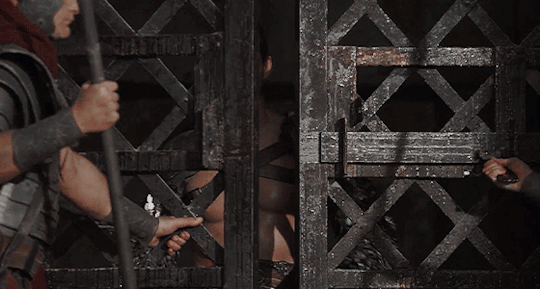


andy whitfield as 𝐒𝐏𝐀𝐑𝐓𝐀𝐂𝐔𝐒.
𝐒𝐩𝐚𝐫𝐭𝐚𝐜𝐮𝐬: 𝐁𝐥𝐨𝐨𝐝 𝐚𝐧𝐝 𝐒𝐚𝐧𝐝. S02E12 , “Revelations.”
( my spartacus series. )
#[ god i miss him sfm 🥺 rip andy always our spartacus ]#[ ps. bro u know looking this good was unfair right??? ]#spartacus#spartacus blood and sand#spartacusedit#perioddramaedit#perioddramasource#starz spartacus#skye gifs spartacus#spartacus starz#andy whitfield#andy whitfield edit#period edit#period tv show#period tv edit#blood and sand#spartacus: blood and sand#gladiator aesthetic#skye giffed*#beloved by skye*
179 notes
·
View notes
Photo

Rudolph Valentino in Blood and Sand (Fred Niblo, 1922)
#rudolph valentino#fred niblo#blood and sand#film#classic film#classicfilmsource#classicfilmedit#silent film#silent film stars#silent era#1920s#my gifs
95 notes
·
View notes
Text



Tyrone Power and Rita Hayworth in Blood and Sand (1941)
#Tyrone Power#Rita Hayworth#Blood and Sand#1940s#old hollywood#old cinema#old movies#classic movies#classic hollywood#gifs#my gifs
72 notes
·
View notes
Text
Maria Montez screentest for "Blood and Sand".
This film was released in 1941 starring Tyrone Power, Linda Darnell, Rita Hayworth and Nazimova.
Maria Montez was making this screentest for "Doña Sol" character that later got Rita Hayworth.
Very special thanks to @74paris for sharing this video from youtube.
#Maria Montez#María Montez#actress#model#1940 Maria#1941 Maria#Blood and Sand#Blood and Sand screen test#screen test#collaboration#La Reina del Tecnicolor#The Queen of Technicolor#Gracia Family#Montez Family
8 notes
·
View notes
Photo
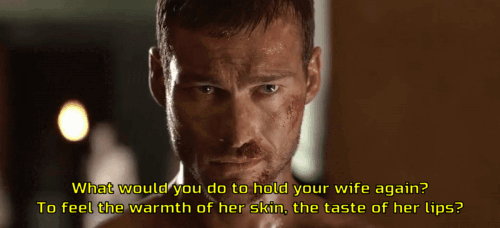
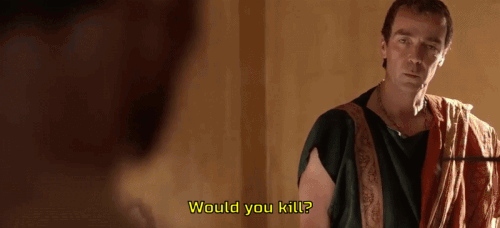
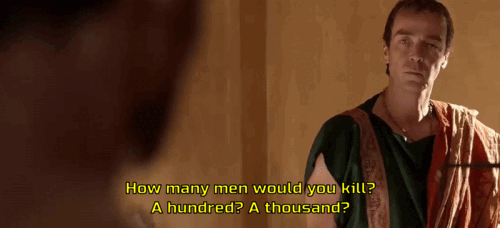

Spartacus
56 notes
·
View notes
Text
The 4077 Film Festival
I watched three (plus) movies that they watched on M*A*S*H; this is my book report.
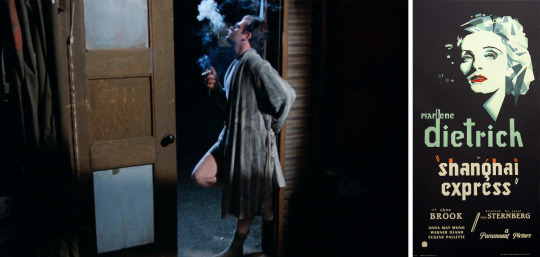
“Marlene Dietrich is back in town.” / 2x24 ‘A Smattering of Intelligence’
Okay so this one is actually just referenced in dialogue, not a specific film we watch them watch, but it happened that I watched two of Josef von Sternberg’s Marlene Dietrich films right before starting the M*A*S*H fest programming in earnest, so prologue, baby, prologue!
I had moved Shanghai Express (1932) up my watch list ever since it kicked off the Little Gold Men podcast’s Pride month Oscar flashbacks series this year, reminding me that I really wanted to see another Marlene Dietrich movie. Just stepping forward a few years into the 1930s also felt good, felt right after watching just so many (all) of Buster Keaton’s movies from the 1920s. Hot Chronological Summer!
I ended up watching both it and Morocco, because Shanghai Express SO enchanted me. Morocco (1930) is the one where Dietrich dresses in a tuxedo and steals a kiss from a woman, but Shanghai Express actually felt more pervasively, albeit subliminally queer to me, perhaps because she and her fellow sapphically inclined co-star Anna May Wong were rumored to have had an affair at some point. There’s just something about the scenes of the two of them lounging in a train car together just listening to music or silently playing cards and coolly eyeing anyone who comes in that says ‘gay culture.’ The actual romance plot is heterosexual of course, but it was wild how much more I was into that relationship than I was her one with Gary Cooper in Morocco, a much more famous and famously handsome star than [looks him up yet again] Clive Brook, and yet Brook all the WAY for me, girl. If we have to choose between Marlene Dietrich’s male love interests in von Sternberg pictures.
Anyway in the second season M*A*S*H episode ‘A Smattering of Intelligence’, Radar is engaged in a bit of hoodwinking (the 4077th’s second favorite pastime after flirting), and to indicate that he’s surreptitiously swapped some papers to further confuse some spy vs. spy antics going on, lights a cigarette and strikes a leg-up pose silhouetted in the doorway, causing spy #2 to ask if that’s the signal, and Hawkeye to remark, “Either that, or Marlene Dietrich is back in town,” and honestly describing Radar as being in drag as a famous bisexual woman from the ‘30s is not necessarily the least accurate description of Radar’s ideal gender that I can think of.
Should you watch Shanghai Express?
Babe yes, so moody in the best way. The play of light and shadow! This mysterious cast of characters all thrown together on a train! The Chinese civil war??? SHANGHAI EXPRESS.
Should you watch Morocco?
Also looks so so beautiful, but if you only have room in your life for one Marlene movie, easy choice it's the above.
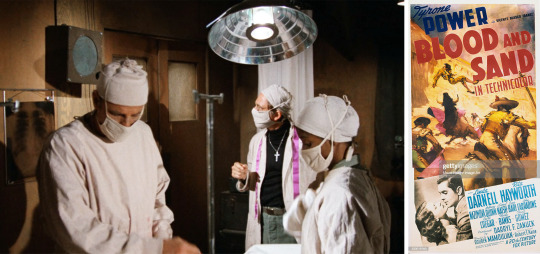
Blood and Sand (1941) / 3x05 ‘O.R.’
And now we reach the movies they actually watch on the show, although the first is a slight feint: this one we only hear. Early in the third season episode ‘O.R.’, recognizing that they’re all going to be working through the night, Radar asks Henry if he should pipe the audio from the movie in over the PA system, and Henry approves of this. I IMMEASURABLY approve of this, and think hearing the sound of old movie dialogue and Spanish guitar playing half muffled overhead as they operate is one of the most spellbinding atmospheres this show ever captured.
But the interesting thing about the choice of Blood and Sand for this episode, is that what this movie was most known for was actually its bold Technicolor visuals. Reportedly, director Rouben Mamoulian would carry around spray paint with him so he could change the color of props at a moment’s notice, and was also known to just paint shadows onto the walls sometimes if he couldn’t get the effect he wanted with light alone. The efforts of Mamoulian and his crew nabbed them the Academy Award for Best Cinematography: Color for 1941 (this was the era where there were two cinematography categories for color and black & white; ran until the 1960s actually!), as well as a nomination for Art Direction.
Though the film got no other notices and somewhat mixed reviews overall, Tyrone Power and Rita Hayworth were big deal movie stars, and their star-power is probably what contributed to much of this movie’s commercial success. When Father Mulcahy, hearing a scene playing over the speaker, asks what this is, Henry just states the title and their names. From another table, Hawkeye adds as a piece of description: “The Frank and Hot Lips of Old Seville.”
As it happens, Hawkeye’s joke is not so far off really! Tyrone Power is playing a passionate dumb matador married to a beautiful and innocent Linda Darnell (secret stalwart of the M*A*S*H programming, she's in two of these!), but gets swept up in a tumultuous affair with a powerful temptress played by Rita Hayworth. Something I learned watching Blood and Sand is that when Loretta Swit is playing Margaret in glimmering, half-lidded seduction mode, a big loose enticing smile on her lips, she is absolutely channeling Rita Hayworth in movies like this. And given the way Blood and Sand goes (I am so sure you can guess), Hawkeye would seem to be implying that Margaret is fully capable of destroying Frank’s whole hapless married ass.
Verisimilitude Corner: What plays over the speakers is 100% a scene in Blood and Sand, but I believe that the Spanish guitar I so love is actually lifted from a different part of the score and layered in with this particular Power & Hayworth dialogue. It creates a much more distinctive auditory profile to weave through the background of this scene; I completely understand why they would have done this.
Should you watch Blood and Sand?
Naw, it’s sure got a look, but story and construction aren’t exactly anything to write home about

Leave Her to Heaven (1945) / 3x18 ‘House Arrest’
The first thing I noticed about Leave Her to Heaven should have occurred to me earlier: 20th Century Fox. All three of these titles turn out to be Fox movies, making all the sense in the world, as M*A*S*H the show was produced by the Fox television arm, after the success of the feature branch’s surprise hit, M*A*S*H the Altman film. Licensing clips of movies is definitely easier when they are also your movies.
The next framing element we need to discuss is that once more, this film was known for its vivid Technicolor cinematography, again the winner of the Academy Award for Cinematography: Color its year! And yet, what they’re watching on M*A*S*H is definitely Leave Her to Heaven, and definitely in black & white. Come to think of it, they all are.
I have tried to figure out what’s going on here, and in the process have learned a lot more about the mechanics both physical and economic of Technicolor film, but have not come up with any definitive explanation (yet), just an educated guess. Which is, as it so often is, especially with the Army: cost. Shooting Technicolor film was outrageously expensive, involving huge cameras that you had to rent by the day from the Technicolor company, through which you would run three strips of film that were treated in different ways, so would respond to light and then dye differently (yes they dyed the film! incredible! are you seeing why it was SO ‘SPENSIVE), and then they’d all be layered together, et voilà: the richer-than-life colors you see in Technicolor films from the 30s-50s.
And as a side product this process also resulted in: a black & white negative. Now I have not yet found anyone confirming this, but my suspicion is that the studios would also make some copies off this negative that were not run through the pricey dye process, and those black & white reels would have been available for cheap if you were, say, the U.S. Army, looking for a discounted way to distract for a couple hours the people you’ve sent to fight a war from the fact that you’ve sent them to fight a war. I think it’s a good theory! But if anyone has actual info PLEASE let me know, I’m so so interested in what was going on here.
But meanwhile: in the third season M*A*S*H episode ‘House Arrest’, Hawkeye, on the titular house arrest, learns that Gene Tierney, striking in any color scheme, is in the movie they have that week, and is ready to move Heaven & Earth, or at least Father Mulcahy, to be able to see her. What Hawkeye does not know at this moment, nor would anyone watching this episode who has not seen John M. Stahl’s Leave Her to Heaven, is that it also predominantly takes place in SMALL TOWN MAINE. I love the idea of M*A*S*H writers putting this easter egg in here, winking “and this will be one for the Criterion crowd :)”, also predicting the emergence of the Criterion Collection ten years later.
Verisimilitude Corner: For reasons I cannot fathom, the Leave Her to Heaven clips playing on the wall of the Swamp are happening all out of order. The first scene we see set at a table takes place in the early middle of the film, then we cut way back to the beginning portion in New Mexico, before swinging all the way to a piece in the last act. There is no wedding scene, no matter what Father Mulcahy says, but it is in fact even funnier that Henry cries at the one he does, as this is actually one of Gene Tierney's big dangerous femme fatale moments (for all that like, they all are—tbc!!), and his weeping at it tracks with how Nurse Able is mystified by his reaction, and earlier he'd complained that after looking away for two seconds he had lost the plot.
Should you watch Leave Her to Heaven?
So turns out Leave Her to Heaven is considered one of the few COLOR NOIRS, and it kinda fucks totally. It looks so Douglas Sirk melodrama gorgeous, but with a plot straight out of Gone Girl. And like, you ever seen Vincent Price, young? NOT I. Impossibly tall. Shows up in a literal rain storm in the desert. Martin Scorsese has said this is one of his favorite movies—the taste.
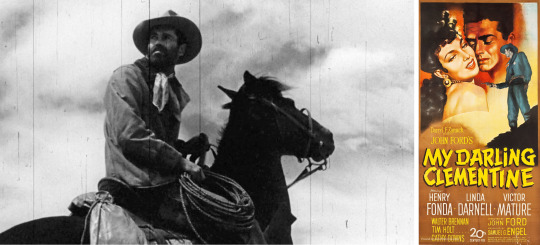
My Darling Clementine (1946) / 5x22 ‘Movie Tonight’
And finally, from the Potter era, and from Potter’s heart, comes the fifth season episode 'Movie Tonight', where we watch really a remarkable amount of the battered copy he’s managed to track down of his favorite film, the John Ford western My Darling Clementine.
Harry Morgan is so cute, the phrase “My Darling Clementine” is so cute—with its lilting song to match—and this episode itself: it’s cute. The film screening works just as Colonel Potter hoped it might: a way to bring his campful of grown theater kids together during a tense patch. It’s very funny how little urging it takes for them to begin using every unplanned projector failure intermission as an opportunity to get up and start doing impressions for each other.
But do you know what’s so intriguing? When I finally watched My Darling Clementine, I found it actually struck a kind of harmony with M*A*S*H’s more melancholy currents. Filmed in 1946, it’s been called one of the first true post-war westerns, and there does feel something sort of haunted in it, this sense of loss. It starts in the song even, which after those first lines you remember is actually about a young woman “lost and gone forever.” So many of the characters are carrying some sort of wound, physicalized in coughs or injuries if not simply the toll clearly being wrought on them by the deaths that keep falling around them.
And then there’s that the two main characters are a brooding, Shakespeare-loving, TB-stricken outlaw surgeon (oh okay!), and their reluctant but-I’ll-do-it new marshal, a mellow, even-voiced, semi-secretly then not at all secretly total fucking weirdo, who caused me to message a M*A*S*H friend part-way in, hey, did we know Henry Fonda as Wyatt Earp is Such A BJ. Fun, FUN. That would have been fun in the mess tent.
The film itself isn’t devoid of humor, either, should mention! Particularly around Old West Hunnicutt. It's that element as well as its dreamy bleakness that pairs well with a mobile hospital post in Korean War sitcom purgatory. Colonel Potter, famously, loves horses, so his 2/3rds horse-based explanation for why he loves this movie raises zero questions, but what that doesn’t indicate is you’re also going to get scenes like one where Doc Holiday is having alcohol poured over his hands so he can do emergency surgery on a pair of scrubbed tables in the saloon. This was a good pick, M*A*S*H writers, is what I’m saying.
Should you watch My Darling Clementine?
Oh yes if I was not clear: Yes
4077 Film Festival: Closing Remarks
I enjoyed this process so much. I love conceptual experiences and homework, so. Really optimal for me. And I love old movies and I love M*A*S*H and I love their use of old movies on M*A*S*H! Contemporary cultural elements like this do wonders I think to call you to their actual time period, as this show is so much about the 1970s and Vietnam, that remembering it's actually set in the '50s can give me an enjoyable swoop in my stomach as I suddenly fall back further in time. It was the 1950s... The records that show up in 'Your Hit Parade' are all jazz... M*A*S*H: good show, good movie & music supervision.
Up next: NOT Bedtime For Bonzo (1951), a real movie, that also underscores my statement above as I just need to express to you: starred future president Ronald Reagan. M*A*S*H!!!!
#M*A*S*H#M*A*S*H hours#Shanghai Express#Morocco (1930)#Josef von Sternberg#Marlene Dietrich#Blood and Sand#Rouben Mamoulian#Rita Hayworth#Linda Darnell#Tyrone Power#Leave Her To Heaven#John M. Stahl#Gene Tierney#Vincent Price#My Darling Clementine#John Ford#Henry Fonda#Victor Mature#Wellntruly's Watch Log
15 notes
·
View notes
Text

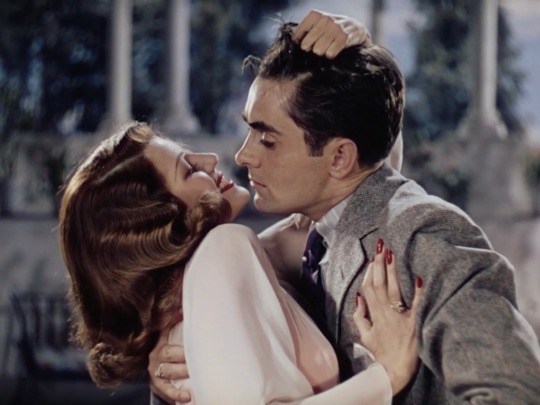

Yes, edge us with some tension.
#rita hayworth#tyrone power#blood and sand#blood and sand 1941#old hollywood#classic hollywood#classic film#1940s hollywood#1940s film#1940s cinema
67 notes
·
View notes
Text

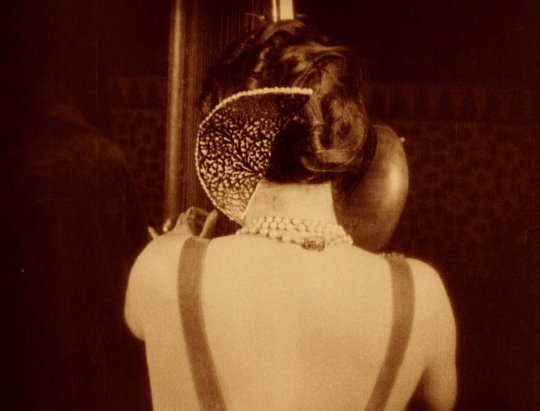


Blood and Sand (Fred Niblo, 1922)
#blood and sand#blood and sand 1922#fred niblo#rudolph valentino#rodolph valentino#silent movie#silent cinema#silent movies#the tear in the last pic so beautiful
6 notes
·
View notes